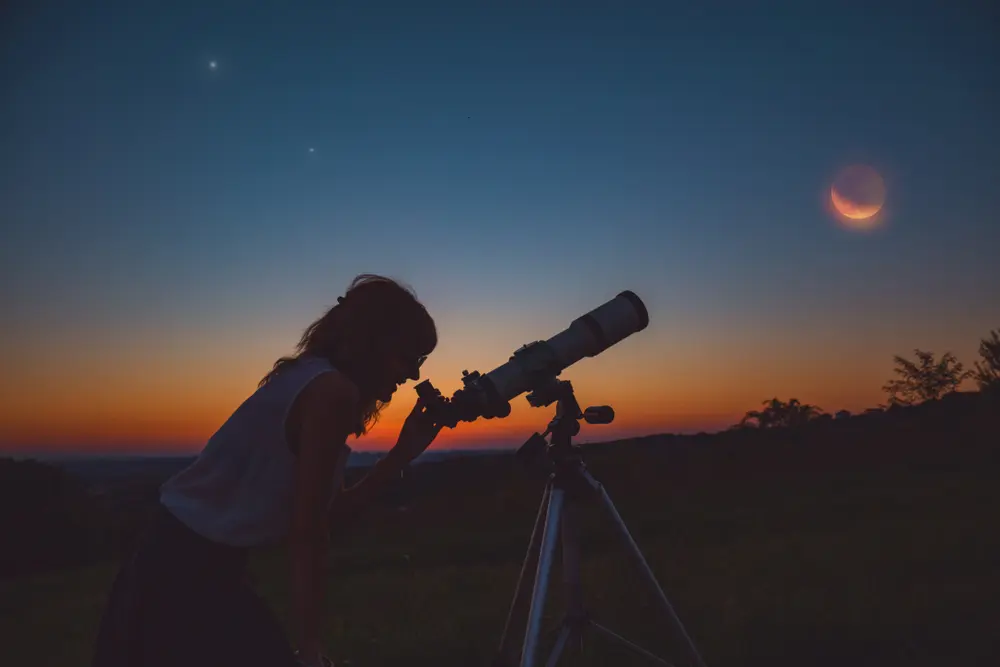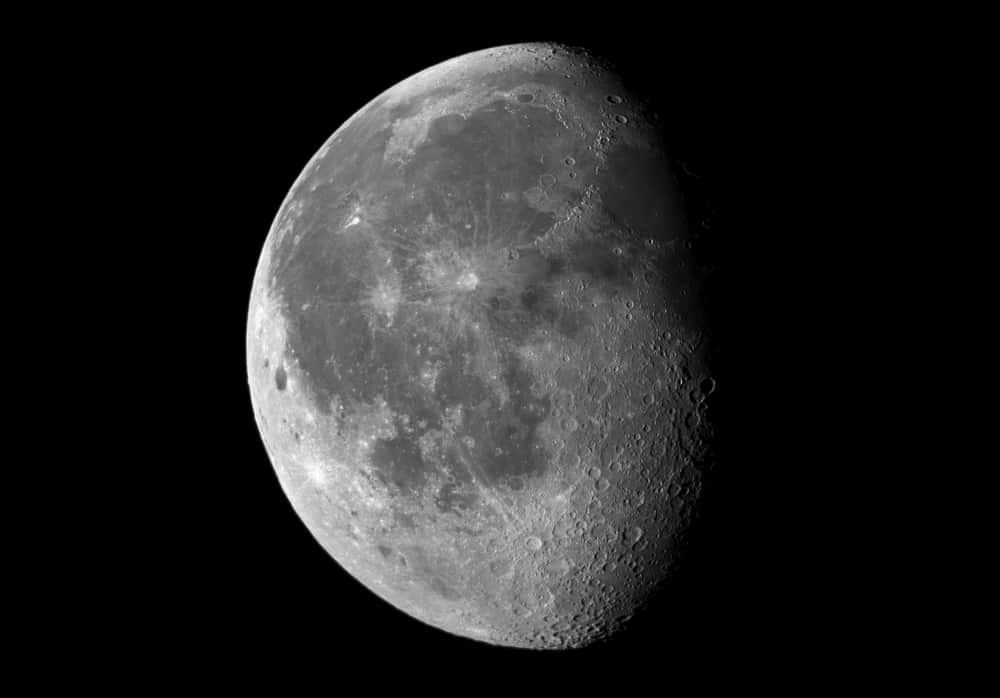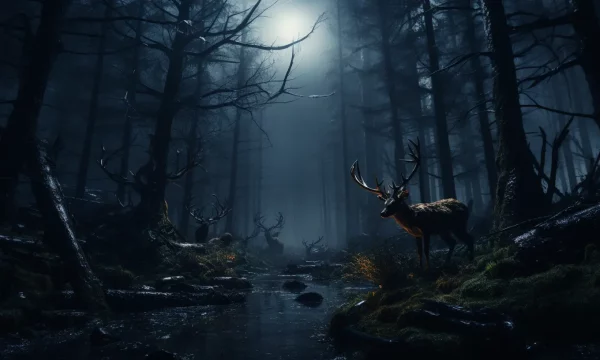
When is The Full Moon in October? The Hunter Full Moon 2023
Last Updated: March 13, 2024
The upcoming full Moon in October will grace our night sky on Saturday 28, 2023 at 4:24 p.m. EDT or 9:24 p.m. UTC. During this particular phase of its lunar cycle, the Moon will have aged 12.89 days, offering an almost perfect illumination of 98.53%.
With a tilt angle of 106.389°, our natural satellite will be located approximately 366,787.96 km away from Earth. This equates to about 227,910.875 miles, or roughly 0.00245 Astronomical Units (AU). This means the Moon will only be about 3% away from its average perigee distance (closest distance from Earth).
In terms of light travel time, this distance corresponds to approximately 0.0203 light minutes. In the realm of astrology, the Moon will align with the sign of Aries on this day.
Countdown to the October Full Moon
October Full Moon Stargazing Information
The Moon’s magnitude, a measure of its brightness, will be -12.73. In astronomical terms, a lower value signifies a brighter object, which means the Moon will be exceptionally bright during this event.
The terms Ra/Dec refer to the Moon’s position in the sky, known as Right Ascension (Ra) and Declination (Dec). These coordinates will be 02h 22m23.5s and +14°32’57.6″, respectively, corresponding to the celestial longitude and latitude.
Similarly, the terms Az/Alt denote the Moon’s azimuth and altitude, which represent the Moon’s direction and height from the horizon, respectively. These will be 086°55’04.8″ for the azimuth and +18°38’27.9″ for the altitude.
The Moon will have an apparent diameter of 32 arcminutes and 18 arcseconds, so even though it will be quite enjoyable to the naked eye, observing it with a basic set of binoculars or a small telescope, will allow for a detailed exploration of its surface features if using a lunar filter. It might be too bright otherwise.
Additional information:
- Moonlight intensity: Vey High
- Moonlight shadows: Strong
- Culmination time: location dependent
- Moonrise time: location dependant
- Moonset time: location dependent
- Supermoon? No
- Micromoon? No
- Blue moon? No
- Lunar Eclipse: Yes – Partial
- Conjunctions? None
- Close approach: Yes, Jupiter
Nearby night sky objects:
On that night, the full moon will be located right in between the constellations of Cetus, Pisces and Aries. Just next to it you will be able to see Jupiter, the godfather planet of the solar system shining at a magnitude of -2.76. A little further South-West from the Moon, Uranus is making its way along the ecliptic.
In terms of nearby deep-sky objects, you will be able to spot The Pleiades (also known as the Seven Sisters) in the South-West. Although this object looks great even in binoculars, the strong shine of the full moon will most likely impair your view a tad bit.
Why is the Full Moon in October called the Hunter Moon?
Many people know that later fall is the time to hunt. The deer and foxes are nice and fat. The leaves are falling. The harvests from the fields have been reaped. Hunters can take advantage of these natural and social conditions to more easily hunt their prey even at night, including other predator animals that are also hoping to take advantage of the season. This name comes from Anglo-Saxon origins.
As mentioned earlier, October’s full moon may also be the Harvest Moon if it is one nearest to the autumnal equinox.
Some Native American names for this moon include the Drying Rice Moon, the Falling Leaves Moon, and the Freezing Moon to designate the traditions of this month. The Celtics used Seed Fall Moon and the Pagan Blood Moon or Sanguine Moon is typically used for this full moon (this is different than a total lunar eclipse which is referred to as a Blood Moon). Other names include the Travel Moon and the Dying Grass Moon. In China, it is known as the Kindly Moon.
For 2023, this moon will also feature a partial lunar eclipse on the 28th-29th (depending on your location) in Europe, Asia, Africa, and most of Australia. Other areas such as Northeast North America and much of the Eastern side of South America as well as parts of Australia and Alaska will be able to see the penumbral side of the eclipse.
In addition, October 21st is International Observe the Moon Night so be sure to check for local events both related to the lunar eclipse and this special annual event to get together and observe the moon in fun and interesting ways.
Related reading: The Meaning Behind the 12 Full Moon Names
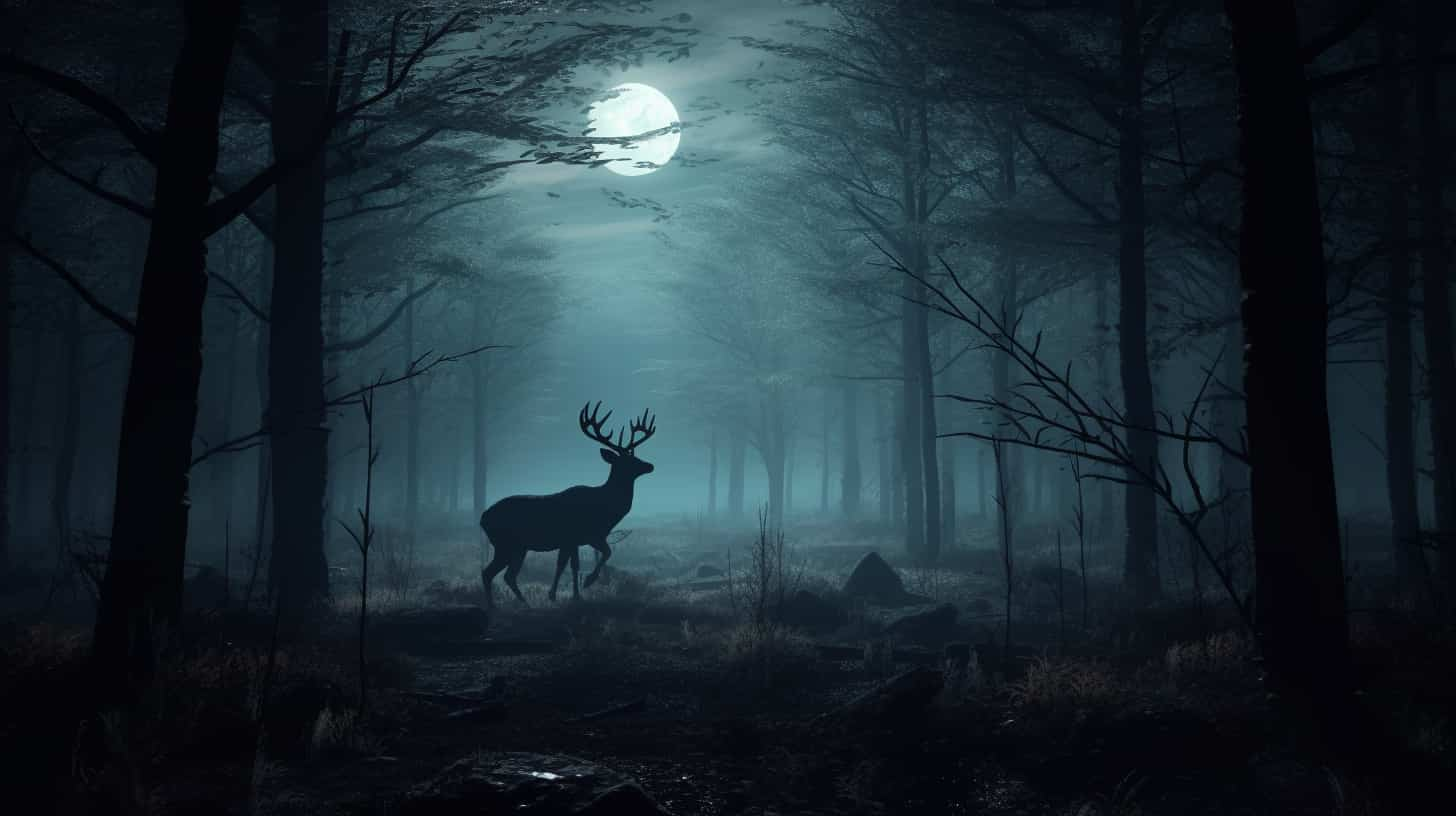
Observing this Hunter Full Moon with astronomical equipment
The Moon offers a variety of interesting features that you can observe, even with modest equipment. The Moon is without a doubt the easiest celestial object to observe with a backyard telescope or a pair of astronomical binoculars.
The Moon can shine a rather bright light when it is full so the use of a special lunar filter can help improve your view of the Moon. This is an additional component that reduces the amount of light coming into the telescope, making it easier to see the details without being blinded.
It essentially works much like ‘sunglasses’ for your telescope. It reduces glare and improves contrast, allowing you to see more detail. The filter threads into the bottom of an eyepiece, so it’s easy to add or remove as needed.
A smaller aperture telescope (60mm to 80mm) can provide good views of the Moon. You’ll be able to see a decent amount of detail, including larger craters and lunar maria.
Medium aperture telescopes (around 100mm to 150mm) will give you a much better view, revealing many more features and allowing you to see smaller craters and other details.
With large aperture telescopes (200mm and above), that’s where the magic happens! You’ll see more detailed views of the edges of lunar maria, where they meet the highlands.You’ll be able to discern more subtle color differences in the lunar surface as well as mountain ranges casting subtle shadows on the lunar surface. You might be able to see hints of the lunar domes, which are gentle, rounded mounds thought to be the remnants of ancient lunar volcanoes.
Be sure to choose the correct eyepiece as it will greatly influence your field of view at the eyepiece. Try my field of view calculator to determine the best eyepiece for your lunar observations.
Planning your lunar observation with Stellarium
Stellarium is a free open-source planetarium for your computer that shows a realistic sky in 3D, just like what you see with the naked eye, binoculars, or a telescope. It’s one of my favourite stargazing applications. I use it on a weekly basis and it’s super easy to use.
Here is a step-by-step guide to using it for timing your observation of the upcoming hunter full Moon:
- Set Your Location: Open https://stellarium-web.org/ into your internet browser. In order to find accurate rise and set times for the Moon, you need to set your geographic location. Click on the “Location Window” button on the left toolbar. In the window that pops up, search for your city in the “Search” field, then click on your city’s name in the list. This sets your location.
- Set the right time: Stellarium can show you the sky at any time, past, present, or future. To get the full Moon time, which in October will be the 28th, you need to click on the “Date/time window” button on the bottom right of the screen. You can also manually adjust the time by hours and minutes and see the sky move before your eyes.
- Locate the Moon: Now, you need to find the Moon in the sky. You can do this by using the search function. Click on the “Search Window” button on the centre top of screen. Type “Moon” into the search field and press enter. The view should now center on the Moon.
- Check Moonrise and Moonset Times: Once the Moon is centered, an information box should pop up on the upper left corner of the screen. This box will provide various details, including the moonrise and moonset times for the chosen day.
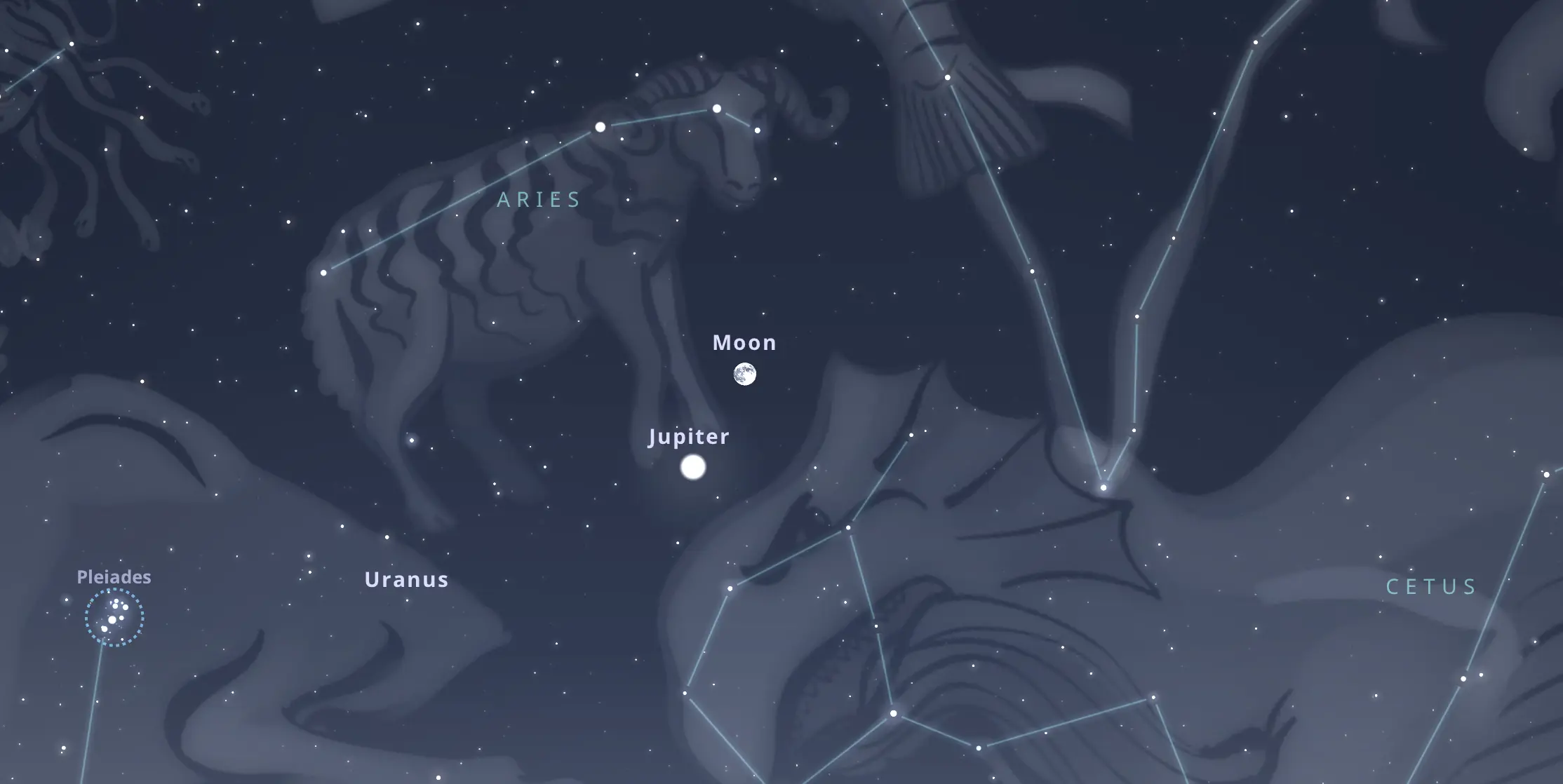
Dates & Times for the other Moon phases in October
Besides the full moon, there are seven other major phases in the lunar cycle: the new moon, waxing crescent, first quarter, waxing gibbous, waning gibbous, last quarter, and waning crescent. Each of these phases presents a unique view of the moon and contributes to the lunar cycle that we observe from Earth.
- Last Quarter on Friday, 06 October 2023 at 06:48 PDT (13:48 UTC)
- New Moon on Saturday, 14 October 2023 at 10:56 PDT (17:56 UTC)
- First Quarter on Saturday, 21 October 2023 at 20:29 PDT (03:29 UTC)
The next Hunter full Moon will take place on Thursday 17 October 2024 at 04:26 PDT (11:26 UTC)
Lunar Luminosity: the full Moon’s light influence on the world
The full Moon has a few notable influences on Earth:
- Tides: The gravitational pull of the Moon causes the Earth’s oceans to bulge out in the direction of the Moon.
- Light: A full Moon provides significant natural light at night, which can affect nocturnal animals’ behavior and plant life.
- Floral behaviours: Some species of plants, such as the Ephedra foeminea (also known as werewolf plant) releases its pollen in sync with the full Moon.
- Human behavior: There have been many theories on how the full Moon may affect humans differently, whether it be our sleep pattern, our cardiovascular system, menstruation cycles, and our mood and mental health. However, despite much scientific research that has been done in the last ten years, scientists have not been able to prove the effects of the full Moon on human psychology or behavior.
Full Moon celebrations around the world
The full Moon has been a significant cultural symbol and theme throughout human history, appearing in myths, legends, superstitions, and rituals across the globe. In Thailand, the full Moon is celebrated every month during the infamous full Moon party.
In Sri Lanka, each full Moon day is a public holiday, known as Poya. Each Poya has its own name and is associated with Buddhist events. These days, people often go to the temple for religious observances.
In Wiccan traditions, an Esbat is a ritual observance of the full Moon. It’s a time for meditation, divination, and spellwork that align with the peak of the Moon’s energy.
In China, the Mid-Autumn Festival, also known as the Moon Festival, is celebrated during the full Moon of the 8th lunar month (usually September). Families gather to admire the Moon, eat mooncakes, and in some regions, light lanterns.
If you know of any more celebrations that should be added to this list, let me know in the comment.
How dull would our night sky be without our natural satellite? Why not use this full moon as an opportunity to plan a lovely stargazing date with someone special in your life?
Past Full Moons This Year
- The January ‘Wolf” Full Moon
- The February ‘Snow’ Full Moon
- The March ‘Worm” Full Moon
- The April ‘Pink” Full Moon
- The May ‘Flower” Full Moon
- The June ‘Strawberry’ Full Moon
- The July ‘Buck’ Full Moon
- The August ‘Sturgeon’ Full Moon
- The September ‘Corn’ Full Moon
Future Full Moons This Year



